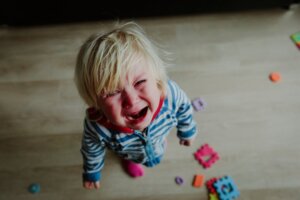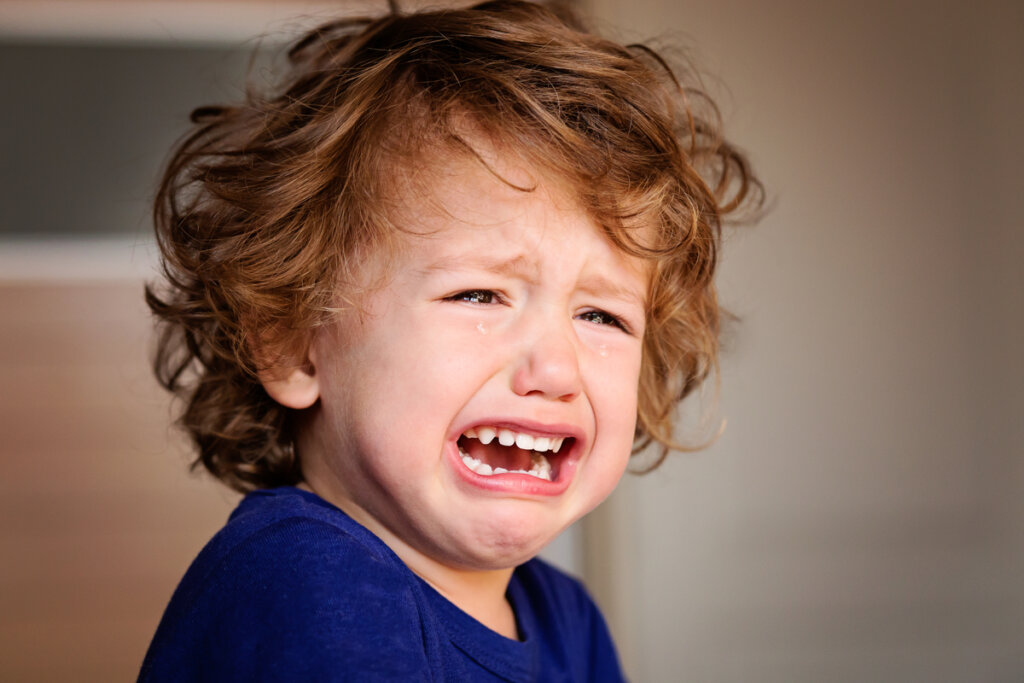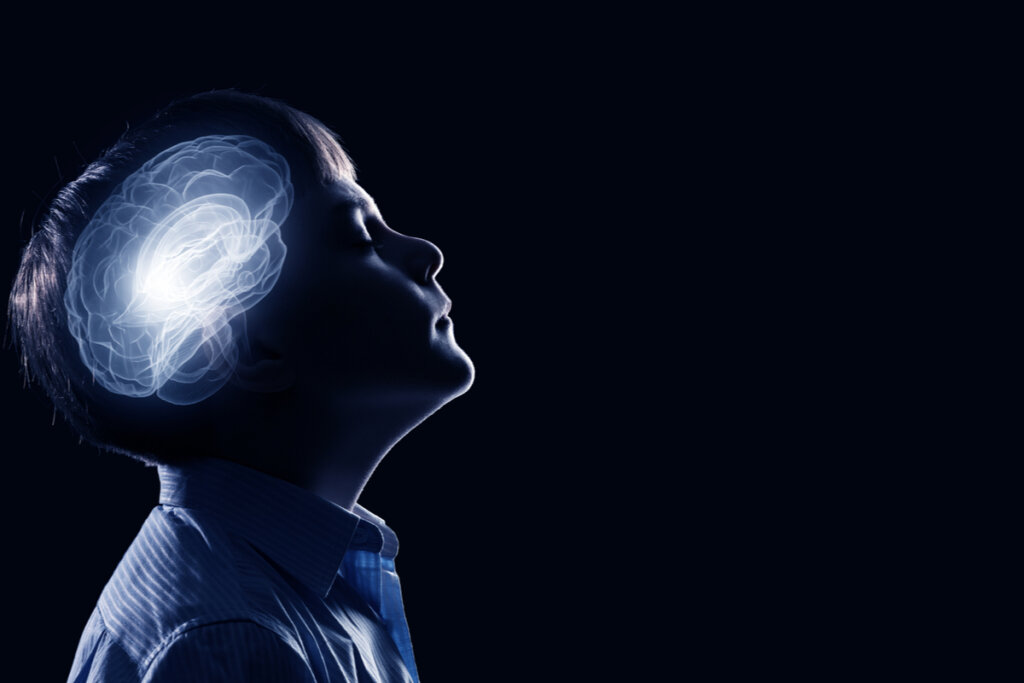Neuroscience Can Explain Children's Bad Behavior

Often, when your child behaves badly, you might ask yourself why. Is there something hidden behind it? What can you do to reduce it? Below, we explain what the cause might be.
There may be many reasons for children’s bad behavior. For example, an emotional need that must be met or circumstances of a biological origin. In this sense, it’s not something that you’re doing wrong as a parent but a situation that has its origin in genetics. There are many sciences that study the relationship between behavior and biology, among them is the field of neuroscience.
Neuroscience is one of the disciplines responsible for studying the brain and nervous system. Within this field, is the branch of cognitive neuroscience. This field is in charge of the biological processes that are the basis of our cognitive functioning. In other words, thinking, remembering, the way we make decisions, and, in many cases, how we act.
However, what does neuroscience say about children’s bad behavior? Firstly, we need to understand a little about how the brain works.

Brain areas and their functions
Before explaining how the brain influences behavior, we’re going to review the different areas that make it up and how each of them works.
The brain, being an extremely complex organ, tends to divide its different functions by area. In fact, it’s almost as if it were a company and in each department, there’s a ‘service section’ in charge of each request.
Here’s an example to help you understand. If you get hurt, the information reaches your brain and the relevant ‘department’ makes you feel pain and communicates it to other brain areas so that they can manage that situation.
Next, we’ll detail the regions of the brain and what they do.
- The prefrontal cortex. Attention, planning, self-regulation, and behavior orientation. These are known as executive functions.
- The parietal lobe. Touch, pressure, balance, and coordination.
- Occipital lobe. Visual processing.
- Temporal lobe. Complex visual tasks, auditory processing, emotion regulation, and motivation.
- Cerebellum. Execution of precise movements, balance, posture, and motor learning.
- Broca and Wernicke’s area. Language production and comprehension.
It should be clarified that, although each lobe has its specialization, this doesn’t imply that they work individually. On the contrary, each region communicates with the others to give a better response to the stimulus.
What happens if one of these areas fails?
In many cases, the failure of some of these regions, whether acquired (a car accident, a serious fall, etc.) or congenital (born with the problem or difficulty), can cause behavioral disorders.
Generally, behavioral disorders are related to hyperactivity and abrupt emotional changes. For instance, disinhibition, impulsiveness, irritability, psychomotor agitation, aggression, apathy, reduced initiative, and lack of motivation.
The child’s brain
In a child’s brain, the prefrontal cortex is in the process of maturing. As a matter of fact, many studies claim that it doesn’t finish maturing until around twenty to twenty-five years of age. In addition, the child is behaving with what’s known as the most primitive brain (or the reptilian brain).
Our brains develop from the back to the front. This means that the sensitive areas or the senses (taste, smell, touch, and sight) are the first to be activated and information passes through them. Then, the motor areas are developed, responsible for voluntary movements like walking, speaking, and writing.
Furthermore, the brain develops from the right hemisphere. This most emotional part relates to attention, memory, and reasoning. For this reason, emotions permeate the behavior of children more than that of adults.
Finally, let’s explain the neuroscience of misbehavior:
The neuroscience behind children’s bad behavior
Paul D. MacLean, a renowned American neuroscientist identified the triune brain. We’ll use his now somewhat controversial theory (1960) because it’ll help us in understanding the brains of our children.
His theory tells us that our brain is made up of three parts (complexes). They’re as follows:

The reptilian complex (lizard brain)
This is made up of the basal ganglia and is necessary for us to control motor activities, such as riding a bike, playing an instrument, or drawing. It’s formed by the brainstem, which is responsible for transmitting sensory information.
This brain is the oldest. In fact, it’s several million years old and is responsible for guaranteeing our existence and regulating our blood pressure, respiratory rate, and temperature. It means that, in a dangerous situation, two extremely different people react similarly.
Some of our children’s reactions are closely related to this part of the brain that’s still maturing.
The paleomammalian complex (the limbic system)
This brain is somewhat more complex. It’s just over 150 million years old and is located above the reptilian brain. It represents emotions such as joy, sadness, disgust, fear, etc. It also accumulates memories of past experiences. This greatly affects our behavior.
For example, if you hit the table when you’re angry, it’s the limbic brain that’s responsible.
The neomammalian complex
Finally, the neomammalian complex consists of the neocortex. It’s the part of the brain that’s evolved the most and is only two or three million years old. Its main function is to manage our emotional world using cognitive skills. For example, the ability to concentrate, memory, behavioral choices, self-reflection, and problem-solving, among others.
Logic and reason originate from this brain, which allows us to read and plan, among other things. This part will tell you if hitting the table was correct or not.
Since this is the last part of the brain to develop, it explains why children have moments when they show little control over their emotions and reactions.
Often, when your child behaves badly, you might ask yourself why. Is there something hidden behind it? What can you do to reduce it? Below, we explain what the cause might be.
There may be many reasons for children’s bad behavior. For example, an emotional need that must be met or circumstances of a biological origin. In this sense, it’s not something that you’re doing wrong as a parent but a situation that has its origin in genetics. There are many sciences that study the relationship between behavior and biology, among them is the field of neuroscience.
Neuroscience is one of the disciplines responsible for studying the brain and nervous system. Within this field, is the branch of cognitive neuroscience. This field is in charge of the biological processes that are the basis of our cognitive functioning. In other words, thinking, remembering, the way we make decisions, and, in many cases, how we act.
However, what does neuroscience say about children’s bad behavior? Firstly, we need to understand a little about how the brain works.

Brain areas and their functions
Before explaining how the brain influences behavior, we’re going to review the different areas that make it up and how each of them works.
The brain, being an extremely complex organ, tends to divide its different functions by area. In fact, it’s almost as if it were a company and in each department, there’s a ‘service section’ in charge of each request.
Here’s an example to help you understand. If you get hurt, the information reaches your brain and the relevant ‘department’ makes you feel pain and communicates it to other brain areas so that they can manage that situation.
Next, we’ll detail the regions of the brain and what they do.
- The prefrontal cortex. Attention, planning, self-regulation, and behavior orientation. These are known as executive functions.
- The parietal lobe. Touch, pressure, balance, and coordination.
- Occipital lobe. Visual processing.
- Temporal lobe. Complex visual tasks, auditory processing, emotion regulation, and motivation.
- Cerebellum. Execution of precise movements, balance, posture, and motor learning.
- Broca and Wernicke’s area. Language production and comprehension.
It should be clarified that, although each lobe has its specialization, this doesn’t imply that they work individually. On the contrary, each region communicates with the others to give a better response to the stimulus.
What happens if one of these areas fails?
In many cases, the failure of some of these regions, whether acquired (a car accident, a serious fall, etc.) or congenital (born with the problem or difficulty), can cause behavioral disorders.
Generally, behavioral disorders are related to hyperactivity and abrupt emotional changes. For instance, disinhibition, impulsiveness, irritability, psychomotor agitation, aggression, apathy, reduced initiative, and lack of motivation.
The child’s brain
In a child’s brain, the prefrontal cortex is in the process of maturing. As a matter of fact, many studies claim that it doesn’t finish maturing until around twenty to twenty-five years of age. In addition, the child is behaving with what’s known as the most primitive brain (or the reptilian brain).
Our brains develop from the back to the front. This means that the sensitive areas or the senses (taste, smell, touch, and sight) are the first to be activated and information passes through them. Then, the motor areas are developed, responsible for voluntary movements like walking, speaking, and writing.
Furthermore, the brain develops from the right hemisphere. This most emotional part relates to attention, memory, and reasoning. For this reason, emotions permeate the behavior of children more than that of adults.
Finally, let’s explain the neuroscience of misbehavior:
The neuroscience behind children’s bad behavior
Paul D. MacLean, a renowned American neuroscientist identified the triune brain. We’ll use his now somewhat controversial theory (1960) because it’ll help us in understanding the brains of our children.
His theory tells us that our brain is made up of three parts (complexes). They’re as follows:

The reptilian complex (lizard brain)
This is made up of the basal ganglia and is necessary for us to control motor activities, such as riding a bike, playing an instrument, or drawing. It’s formed by the brainstem, which is responsible for transmitting sensory information.
This brain is the oldest. In fact, it’s several million years old and is responsible for guaranteeing our existence and regulating our blood pressure, respiratory rate, and temperature. It means that, in a dangerous situation, two extremely different people react similarly.
Some of our children’s reactions are closely related to this part of the brain that’s still maturing.
The paleomammalian complex (the limbic system)
This brain is somewhat more complex. It’s just over 150 million years old and is located above the reptilian brain. It represents emotions such as joy, sadness, disgust, fear, etc. It also accumulates memories of past experiences. This greatly affects our behavior.
For example, if you hit the table when you’re angry, it’s the limbic brain that’s responsible.
The neomammalian complex
Finally, the neomammalian complex consists of the neocortex. It’s the part of the brain that’s evolved the most and is only two or three million years old. Its main function is to manage our emotional world using cognitive skills. For example, the ability to concentrate, memory, behavioral choices, self-reflection, and problem-solving, among others.
Logic and reason originate from this brain, which allows us to read and plan, among other things. This part will tell you if hitting the table was correct or not.
Since this is the last part of the brain to develop, it explains why children have moments when they show little control over their emotions and reactions.
All cited sources were thoroughly reviewed by our team to ensure their quality, reliability, currency, and validity. The bibliography of this article was considered reliable and of academic or scientific accuracy.
- Barco, A. N., Engeby, T. W., & Ribal, J. B. (2004). Cerebelo y procesos cognitivos. Anales de Psicología/Annals of Psychology, 20(2), 205-221.
- Carlson, N. (2019). Fisiología de la conducta . Pearson, 2-3.
- Matute, E. y. (2010). Neuropsicología infantil: historia, conceptos y objetivos. En S. Viveros Fuentes. . Neuropsicología del Desarrollo Infantil, 3.
- Ripoll, D. R., Adrover-Roig, D., & Rodríguez, M. P. A. (2014). Neurociencia cognitiva. Editorial médica panamericana.
- Tamayo, J. (2016). La relación cerebro-conducta ¿hacia una nueva dualidad? Revista Internacional de Psicología y Terapia Psicológica, 285-293.
This text is provided for informational purposes only and does not replace consultation with a professional. If in doubt, consult your specialist.







